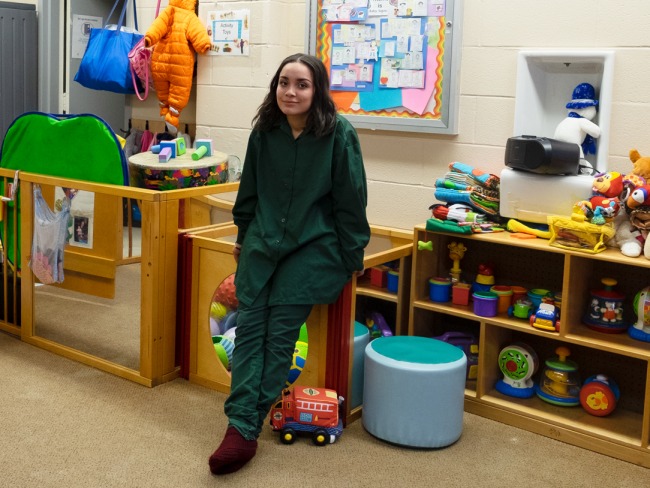Can We Wait 60 Years to Cut the Prison Population in Half?
Following a nearly 700% increase between 1972 and 2009, the U.S. prison population declined 11% in the subsequent 10 years. At this rate of decline it will take 57 years — until 2078 — to cut the prison population in half.
Related to: Incarceration
The U.S. prison population declined 11% in 10 years after reaching an all-time high in 2009. This modest reduction follows a nearly 700% increase in the prison population between 1972 and 2009.1 As of year end 2019, 1.4 million people were in U.S. prisons; an imprisonment rate unmatched worldwide. At the recent pace of decarceration, it will take nearly six decades to cut the U.S. prison population in half.
This analysis is based on the most recent data from the Bureau of Justice Statistics on people serving sentences greater than one year. Since the coronavirus pandemic began in 2020, a number of states and the federal system have made additional, albeit limited, reductions in their prison populations. This analysis underscores the need to reduce unnecessarily high levels of imprisonment amidst a public health crisis and going forward. Meaningful decarceration, as explained below, requires reducing excessive prison terms for violent convictions.
Significant Variation Across States
All but four states have reduced their prison populations at least somewhat since reaching their peak levels. For 25 states, the reduction in imprisonment was less than 10%. The federal prison population downsized by 20% relative to its peak level in 2011.2 Nine states have made significant progress in curbing mass incarceration by decarcerating 30% or more since reaching their peak imprisonment levels: Alaska, New Jersey, New York, Connecticut, Alabama, Rhode Island, Vermont, Hawaii, and California.3 Several of these states outpaced the nationwide crime drop while making prison population reductions that result from a mix of changes in policy and practice designed to reduce prison admissions and lengths of stay. Yet dangerous overcrowding persists in some of these states. In Alabama plans are underway to build additional prisons rather than reduce a still-bloated prison system, and the federal government is suing the state alleging serious Constitutional violations in the state’s prisons. In addition to the insufficient pace of population reduction in most states, four states had their highest ever prison populations in 2019: Montana, Idaho, Nebraska, and Kansas.
Modest Pace of Reforms
Although 46 states and the federal system have reduced their prison populations since reaching peak levels, the pace of reform has been slow to reverse nearly four decades of aggressive annual imprisonment growth.
At this pace of decarceration since 2009, averaging 1.2% annually, it will take 57 years — until 2078 — to cut the U.S. prison population in half.
Clearly, waiting nearly six decades to substantively alter a system that is out of step with the world and is racially biased is unacceptable.
Meaningful Decarceration Requires Reforms for Extreme Sentences
The United States has made only modest progress in ending mass incarceration despite a dramatic decline in crime rates. By year end 2019, reported crime rates had plummeted to half of their 1990s levels—as they did in many other countries that did not increase imprisonment levels.4 Expediting the end of mass incarceration will require accelerating the end of the Drug War and scaling back sentences for all crimes, including violent offenses for which half of people in prison are serving time.5
Past reforms have helped to reduce the number of people imprisoned for a drug offense by 31% between peak year 2007 and 2018. The number of people imprisoned for a property offense has declined by 24% between peak year 2007 and 2018. But for the half of the prison population imprisoned for a violent crime—which ranges from certain burglaries, robbery, and assault to rape and murder—reforms remain elusive. Overall, the number of people imprisoned for a violent offense has only declined by 5% between peak year 2009 and 2018, despite substantial declines in violence since the mid-1990s. Longer prison terms have prevented this segment of the prison population from contracting alongside a historic crime drop.
A key driver of mass incarceration has been the dramatic growth in prison terms, including the unprecedented growth in life imprisonment such that the population serving life sentences in 2016 exceeded the total prison population in 1970. The reluctance to scale back extreme sentences is at odds with evidence that long sentences incapacitate older people who pose little public safety threat, produce limited deterrent effect, and detract from more effective investments in public safety. Expediting the end of mass incarceration will require moderating prison terms for violence as well as minimizing imprisonment and prison terms for non-violent crimes.
| 1. | The imprisonment rate per 100,000 U.S. residents, which accounts for population growth, grew from 93 in 1972 to 506 in 2008. It then declined by an average of 2% annually until 2019. At this rate, it would take 39 years—until 2060—to halve the imprisonment rate, and until 2107—86 years—to return to 1972’s rate of imprisonment. See Figure 1 for source information. |
|---|---|
| 2. | This figure is based on the number of people serving sentences longer than one year. The Bureau of Prisons reports that the total population under its jurisdiction decreased by 29% between peak year 2013 and October 1, 2020. This followed a nearly 800% increase in the federal prison population since 1980. |
| 3. | Alaska and Alabama are poised to reverse some of this progress. Prompted by its governor, in 2019 Alaska’s state legislature repealed several aspects of a major criminal justice overhaul, Senate Bill 91. Alabama’s prison population increased by 6% between September 2018 and January 2020, and recent changes in the state’s parole policies and practices are poised to further undo the state’s decarceration. |
| 4. | Federal Bureau of Investigation Uniform Crime Reporting Program; Doob, A., & Webster, C. (2006). Countering punitiveness: Understanding stability in Canada’s imprisonment. Law & Society Review, 40(2), 325–367; Tseloni, A., Mailley, J., & Garrell, G. (2010). Exploring the international decline in crime rates. European Journal of Criminology, 7(5), 375–394 |
| 5. | Carson, E. A. (2020). Prisoners in 2018. Bureau of Justice Statistics. Available at: https://www.bjs.gov/content/pub/pdf/p18.pdf |




